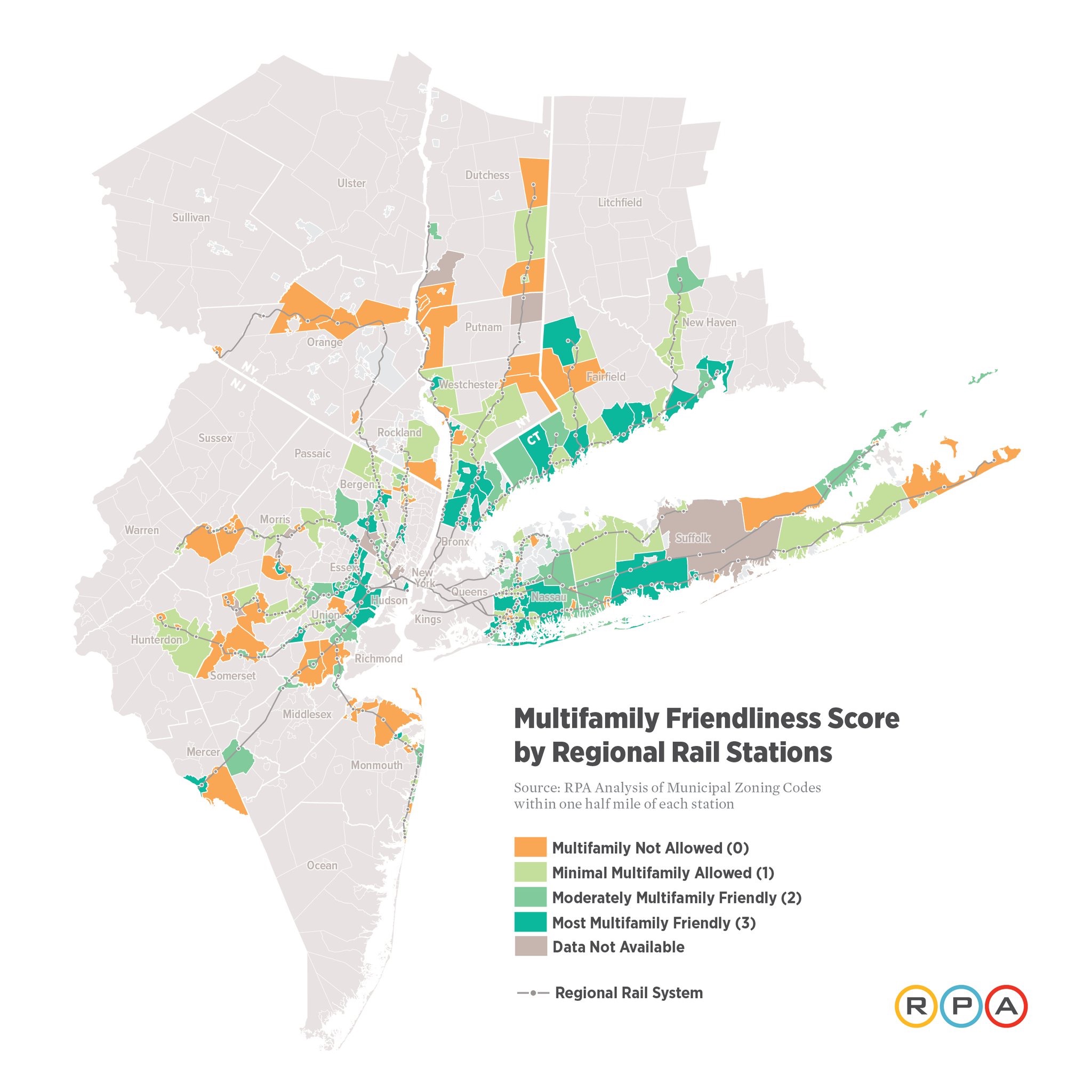Suburban governments can help relieve the New York region's housing crunch by allowing more compact development near regional rail stops, according to a report released today by the Regional Plan Association [PDF].
While some suburbs have already taken steps to develop areas around rail stations into walkable neighborhoods, local zoning restricts housing and commercial development near transit in much of the region. The land near these rail stations could be used to connect more people to jobs and support housing for more than 600,000 people, says RPA.
RPA surveyed all 328 regional rail stations serving NYC in Connecticut, New York, and New Jersey. Of those, 264 have existing sewage infrastructure to support more intensive development. But construction of multi-family housing four stories or higher is only allowed at 114 stations.
RPA found that at 20 percent of regional rail stations outside New York City only single-family homes are allowed, to the exclusion of all other housing types.
The jurisdictions that are more hostile to transit-oriented development tend to be whiter and wealthier than those that have fewer restrictions. Nassau County takes the cake for stations engulfed by car-centric zoning, with 16 stations in towns where regulations don't allow multi-family housing.
The land near these stations is going to waste on parking lots and car-centric sprawl. "These 16 stations in Nassau County had a median of 579,000 jobs accessible by transit within a 60 minute commute – almost five times the regional median of 121,000," the report says.

It will take local zoning reforms to allow for walkable, mixed-use development near the region's rail stations. State governments also have a role to play, says RPA, by making zoning reform a prerequisite for state assistance with infrastructure near stations, and requiring below-market housing in development near transit.
In towns with rail stations, local transit networks also need upgrades to provide "reliable and affordable" service, according to RPA.
"Strategies in this report rely on a commuter rail network and connecting local transit networks that are safe, well-managed, inexpensive, and adequately funded, so transit remains an attractive option," the report says.






